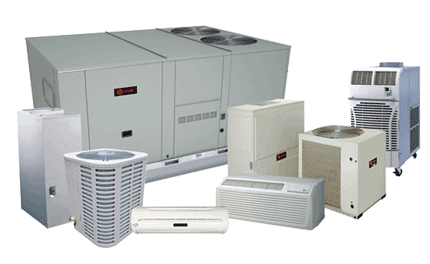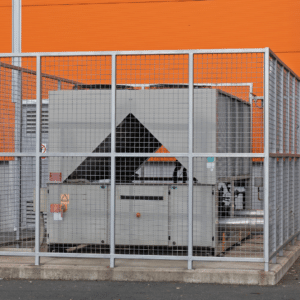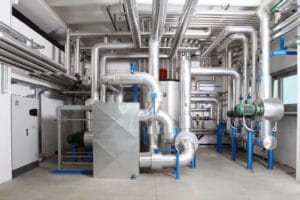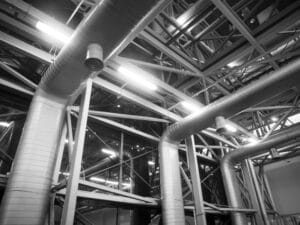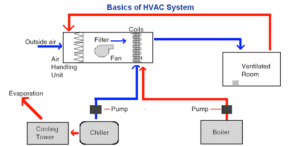 For an indoor environment that is comfortable for you and your family, you require an efficient Industrial HVAC system. But you cannot look for services you know nothing about; that is why at Alliance Comfort Systems, we aim to offer the most effective Industrial HVAC system to our clients and educate them on what makes up these systems.
For an indoor environment that is comfortable for you and your family, you require an efficient Industrial HVAC system. But you cannot look for services you know nothing about; that is why at Alliance Comfort Systems, we aim to offer the most effective Industrial HVAC system to our clients and educate them on what makes up these systems.
How is that helpful to a client? We believe that if you know the components of an industrial HVAC system, it would be easier for you to follow what a technician is referring to during maintenance and repair. An Industrial HVAC system essentially has six parts that all work together to ensure you have a good quality of air indoors. There are other parts like refrigerant lines, air ducts, and vents in addition to these six parts.
Thermostat
Is also referred to as a timer. It is a device that anyone can see and access. You can either set the thermostat manually or use the pre-set programs that are designed in the thermostat. Based on your preferred air conditioning and temperature, a thermostat’s role is to adjust these two. There are sensors in a thermostat that turns on or switch off your air conditioner and heater when needed, and wires are directly connecting the thermostat to the Industrial HVAC system.
Furnace Industrial HVAC System
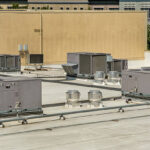 An Industrial HVAC system also has a box fitted with pipes. This box is big, metallic, and more often than not is found in basements and attics of various houses. The furnace requires regular maintenance to improve its efficiency, especially during the winter season. Its main aim is to heat the air in your home; this air is distributed through the HVAC system. A furnace can use various sources of energy to heat the air. These sources include solar, natural gas, electricity, and heat pumps; depending on what you prefer to use, you are not limited to only one energy source.
An Industrial HVAC system also has a box fitted with pipes. This box is big, metallic, and more often than not is found in basements and attics of various houses. The furnace requires regular maintenance to improve its efficiency, especially during the winter season. Its main aim is to heat the air in your home; this air is distributed through the HVAC system. A furnace can use various sources of energy to heat the air. These sources include solar, natural gas, electricity, and heat pumps; depending on what you prefer to use, you are not limited to only one energy source.
Industrial HVAC System Blower Motor
It is another part of the Industrial HVAC system. It works to deliver the warm air to your entire house by powering a fan that does the delivery. Once the air in the heat exchanger reaches a specific temperature, the blower motor is enabled. The warm air passes through air ducts to your rooms. The motor cannot shut down before the air is heated. The blower motor is useful during the summer because it lowers the humidity level and is not noisy.
Industrial HVAC System Heat Exchanger
 A heat exchanger has stainless steel and alloys that are resistant to temperature changes. These two materials prevent the heat exchanger from being damaged like cracks. After the thermostat activates the furnace, the heat from combustion increases and the heat exchanger works to absorb that heat and warm air. There are various models of heat exchangers designed for your comfort. This is a delicate part of the Industrial HVAC system because any slight malfunction may lead to an issue with carbon monoxide, a dangerous gas that may lead to death in worst-case scenarios. That is why installing detectors around the house is vital, especially when using gas or wood furnaces.
A heat exchanger has stainless steel and alloys that are resistant to temperature changes. These two materials prevent the heat exchanger from being damaged like cracks. After the thermostat activates the furnace, the heat from combustion increases and the heat exchanger works to absorb that heat and warm air. There are various models of heat exchangers designed for your comfort. This is a delicate part of the Industrial HVAC system because any slight malfunction may lead to an issue with carbon monoxide, a dangerous gas that may lead to death in worst-case scenarios. That is why installing detectors around the house is vital, especially when using gas or wood furnaces.
Condenser Unit
It is expensive and is installed outside. It releases heat outside, making your house cool. The refrigerant undergoes compression and condensation. It is cooled, and the heat is dispersed and removed from your home through an evaporator coil.
Evaporator Coil
It is found either on the side or top of your furnace. It is made of suitable heat conductor metals like aluminum, steel, and copper. It is a crucial part of a heat pump and cools the air. It requires regular maintenance and cleaning to ensure efficiency.
Contact us with questions about our services for Industrial HVAC Systems.
[sc name=”address” ][/sc]
[sc name=”map” ][/sc]
[sc name=”opening_hours” ][/sc]

